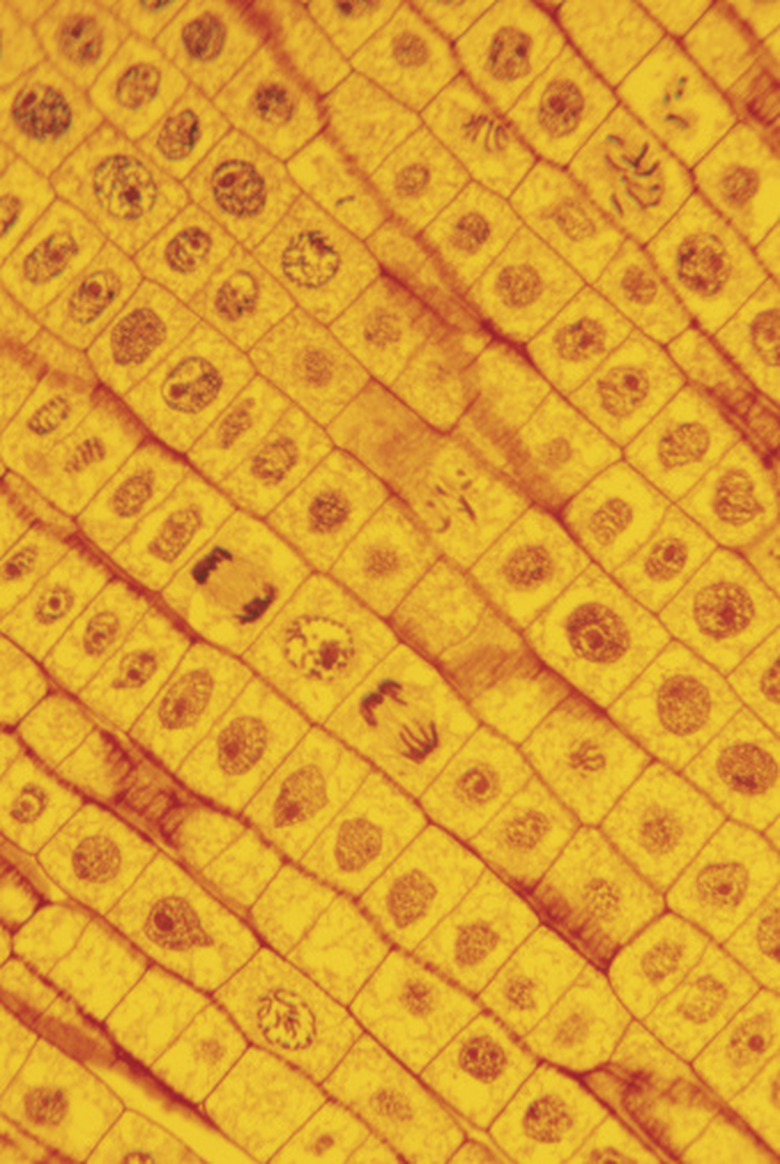Living Cell Characteristics
Cells are the basic units composing all life, essentially a "biology unit." A unicellular organism consists of a single cell, while multicellular organisms are composed of billions of cells, organized at different levels. Cells may vary in appearance and function, yet no matter how different cells may appear, there are many shared characteristics of living cells.
Growth and Development
Growth and Development
Normally, cells grow to a certain size and then stop. Cells cease growing because of intrinsic and extrinsic factors.
Growth factors are proteins in the cell's environment that attach to the plasma membrane, directing cells to continue growing. Growth factors cause cells to grow without initiating cell division. Other cells in the immediate environment may secrete growth factors into the cellular environment to influence the growth of other cells, as in the case of nerve growth factor (NGF). Researchers are contemplating the use of growth factors as a means of promoting wound healing.
Cells may stop growing after the cell membrane, which envelops the cell, touches the membranes of other cells. Certain genes within the cell direct the synthesis of proteins which halt cell growth. When any of these pathways goes awry, cells grow unchecked, resulting in cancer tumor formation, according to the National Center for Biotechnology Information.
Characteristics of Living Things: Homeostasis
Characteristics of Living Things: Homeostasis
Homeostasis denotes a constant internal environment. To survive, cells must maintain a stable environment within itself, regardless of changes outside the cell. Cell membranes allow cells to regulate the situation within cells. Certain substances must stay inside, whereas other substances must stay outside the boundaries.
Cells control the amount of water coming in and going out, to preserve the equilibrium of water inside the cell with respect to the quantity outside the cell. In the same vein, certain vital cellular processes only take place under very specific pH and temperature conditions. pH is the measure of the acidity of a substance.
Cells maintain such stability with the aid of feedback loops. In a feedback loop, a cell detects changes in the concentration of certain substances, such as sodium, and then alters the amount of these substances entering and exiting the cell by tweaking components embedded in the cell membrane.
Internal and External Cell Movement
Internal and External Cell Movement
All cells display some sort of motion, whether internally or externally. Cell movement occurs in both unicellular and multicellular organisms. Internal cell movement refers to organelles inside the cell moving to other parts of the cell with the help of the cell's internal cytoskeleton.
Many cells also move independently of one another. Cells move as a result of thin external structures such as cilia and flagella. The synchronous flapping of the many cilia propels single-celled organisms such as paramecia through liquids, while a single flagellum whips back and forth to push sperm cells forward to unite with an egg cell.
Cellular Reproduction
Cellular Reproduction
Most cells reproduce through the process of mitosis, also known as cell division. Mitosis occurs in both unicellular and multicellular organisms. Cells duplicate themselves for procreation in the case of unicellular creatures, while mitosis in multicellular organisms replaces old cells and is responsible for tissue growth.
Mitosis results in two daughter cells that have the exact genetic material of the original cell. In mitosis, the genetic material — which dictates structure and function in each cell — duplicates and the cell divides down the middle, with each new cell possessing structures identical to the original cell.
Energy Use in Cells
Energy Use in Cells
Cells need energy to power all functions, including protein production and cell division. Energy used by cells typically takes the form of a compound called adenosine triphosphate, or ATP. In many cells, a substance called glucose, a simple type of sugar, reacts chemically with oxygen to produce ATP.
Thus, all energy ultimately derives from plant cells through the process of photosynthesis, wherein plants take carbon dioxide and water with the aid of the sun's light energy to produce oxygen and glucose. Plant cells use the glucose themselves; in turn, organisms that consume either plants or plant-eating organisms receive glucose for their own energy needs.
References
- University of Arizona: Cytoskeleton Tutorial-External Cell Movement
- University of Arizona: Cytoskeleton Tutorial-Internal Cell Movement
- Fulton-Montgomery Community College: An Online Introduction to Advanced Biology-Cells and Energy
- National Center for Biotechnology Information: Molecular Biology of the Cell-Extracellular Control of Cell Division, Cell Growth, and Apoptosis
Cite This Article
MLA
Dinh, Ho-Diep. "Living Cell Characteristics" sciencing.com, https://www.sciencing.com/living-cell-characteristics-7464841/. 13 March 2019.
APA
Dinh, Ho-Diep. (2019, March 13). Living Cell Characteristics. sciencing.com. Retrieved from https://www.sciencing.com/living-cell-characteristics-7464841/
Chicago
Dinh, Ho-Diep. Living Cell Characteristics last modified March 24, 2022. https://www.sciencing.com/living-cell-characteristics-7464841/
